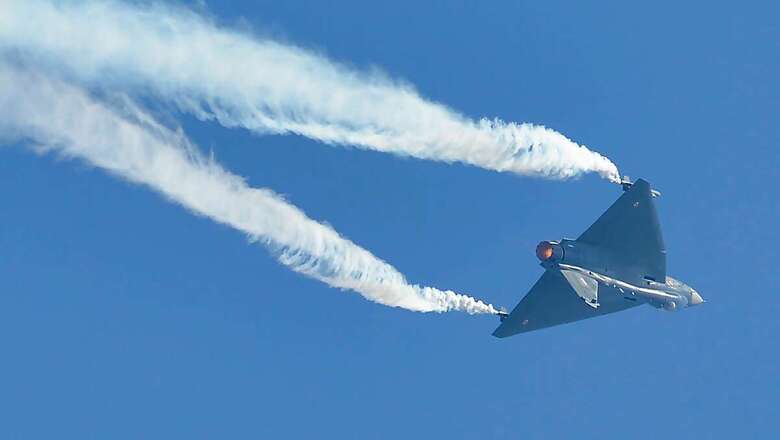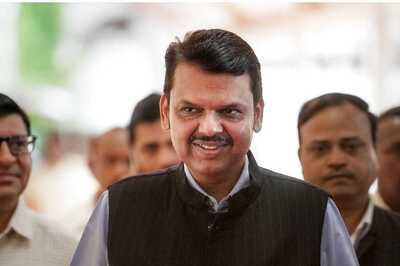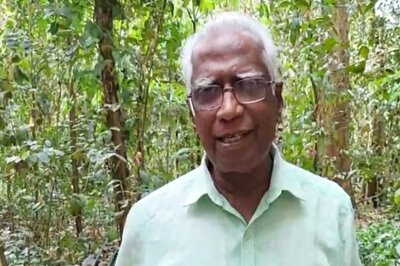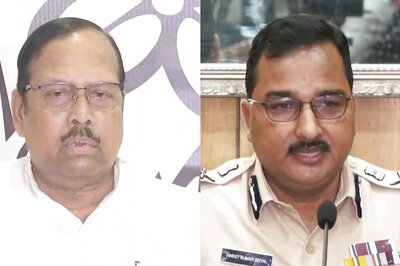
views
The Narendra Modi-led Cabinet Committee on Security’s approval for 83 Light Combat Aircraft (LCA) Tejas jets by Hindustan Aeronautics Limited (HAL) is welcome news.
Way back in 1983, a decision was taken by the government to design a new combat aircraft in India in a bid to reduce dependency on imports and encourage those aspiring for a career in aeronautics.
However, HAL, which had been absent from the scene for over 20 years, did not have the capacity to take on this task. As an alternative, under the Defence Research and Development Organisation (DRDO), the Aeronautical Development Agency (ADA) was created to design and develop the LCA, with the production to be undertaken by HAL.
ADA was the brainchild of Dr VSR Arunachalam, then head of DRDO. With no designers and facilities, a nucleus was formed at ADA with 250 engineers drawn from HAL on ‘deputation’. A new facility was built on an open plot behind HAL. Dr Kota Harinarayana, the Chief Residential Engineer of Directorate of Aeronautics at HAL, Nashik, was made the Programme Director of ADA. A bright and energetic aeronautical engineer, with a smile even under extraordinary circumstances, was suited for the job that would involve facing a series of challenges.
The Roadblocks
A search was initiated for a suitable design for the LCA. Two designs from Germany were evaluated. They were unique but unfamiliar and did not generate enthusiasm in the Indian Air Force (IAF). The IAF was then in the process of procuring the Mirage-2000. The aircraft was test-flown by the IAF team, which was impressed by its design and performance.
The ADA invited M/s Dassault Aviation for design assistance in developing a lightweight combat aircraft (The Air Force had the Gnat in mind and was looking to replace the Mig-21s). Dassault agreed to support the Project Definition Phase (PDP) wherein the Indian engineers would participate. The aim was to come up with the basic design for the aircraft. The work was carried out in France, using the French facilities.
Similarly, L.M. Ericsson of Sweden was roped in for the PDP to develop the design of Air Interception (AI) Radar. The radar design that was presented did not meet the performance expectations of the Air Force.
The idea was dropped, and instead, it was decided the radar would be developed indigenously at HAL, Hyderabad, following the guidelines from the PDP. After working on it for a while, the HAL gave up. It was then decided that radars would be imported to equip the initial batch of aircraft and would be indigenously developed subsequently. The attempt to develop an indigenous engine, Kaveri, met a similar fate. A hunt for a suitable engine for the LCA culminated in the selection of the GE-F404 of General Electric from USA.
Building the Best
The design that emerged looked very much like a mini-Mirage-2000 but there was nothing in common between the two aircraft. The performance projection for the LCA, deduced from the PDP, was found falling short in some areas.
To overcome doubts, it was decided that two “Technology Demonstrators” would be built. This decision eased the pressure and the Demonstrator programme provided an opportunity to refine and improve the design. Designing digital fly-by-wire controls was a difficult task and American help was sought. Extensive simulations were conducted in the US and Indian test pilots got the feel of it, flying in variable stability aircraft at Calspan, US.
The enthusiasm of the ADA silenced the naysayers. The ADA brought in IT engineers for the job. Flight control hardware was sourced from the US. The basic design of the LCA was even more unstable than the F-16 or the Gripen, which was being developed in Sweden. One of the Gripen prototypes crashed while landing (due to over-sensitive flight control close to the ground). This made the Indian designers a bit nervous; discussions were held with the Gripen team that cleared the doubts. Flight control laws of the LCA were made more robust.
Today, the LCA is recognized as having one of the best flight controls in the world—state-of-the-art, offering excellent and safe handling.
The body of the LCA was to be made of carbon-composites – first such attempt in India. Special sanction had to be obtained from the US for carbon fibre material and the production technology besides the GE-F404 engine.
When the HAL was about to start series production, the production drawings were not ready. The longer-than-expected delay resulted in cost overruns. But once the government committed to the project, there was no turning back.
Success and Key Learnings
Thirty-five years have gone by since the formation of the ADA. It would take a few years for the order for 83 aircraft to fructify. Currently, the programme is managed by a string of committees, the apex one being the ADA Governing Body, headed by the defence minister. The three organisations concerned with the development and production of the LCA are ADA, HAL and the Air Force. Each organisation works independently and is not directly accountable to the other—together, they function under the Ministry of Defence.
The ADA has come a long way. The LCA project has been an enormous learning experience for the Indian team and the industry. The biggest learning being that all participants must be integrated at all levels from day one.
The initial roadblocks have been overcome, but it is important to improve the organisational structure based on the lessons learnt. Strong supervision and directions are necessary to help the programme stay on course.
The nation is indeed proud of Tejas and looks forward to more impressive indigenous aircraft designs. The atmanirbhar principle has strengthened our determination.
The author is a retired Air Chief Marshal, who was Chief of Staff, Indian Air Force, 2001-2004. Views are personal.
Read all the Latest News, Breaking News and Coronavirus News here



















Comments
0 comment